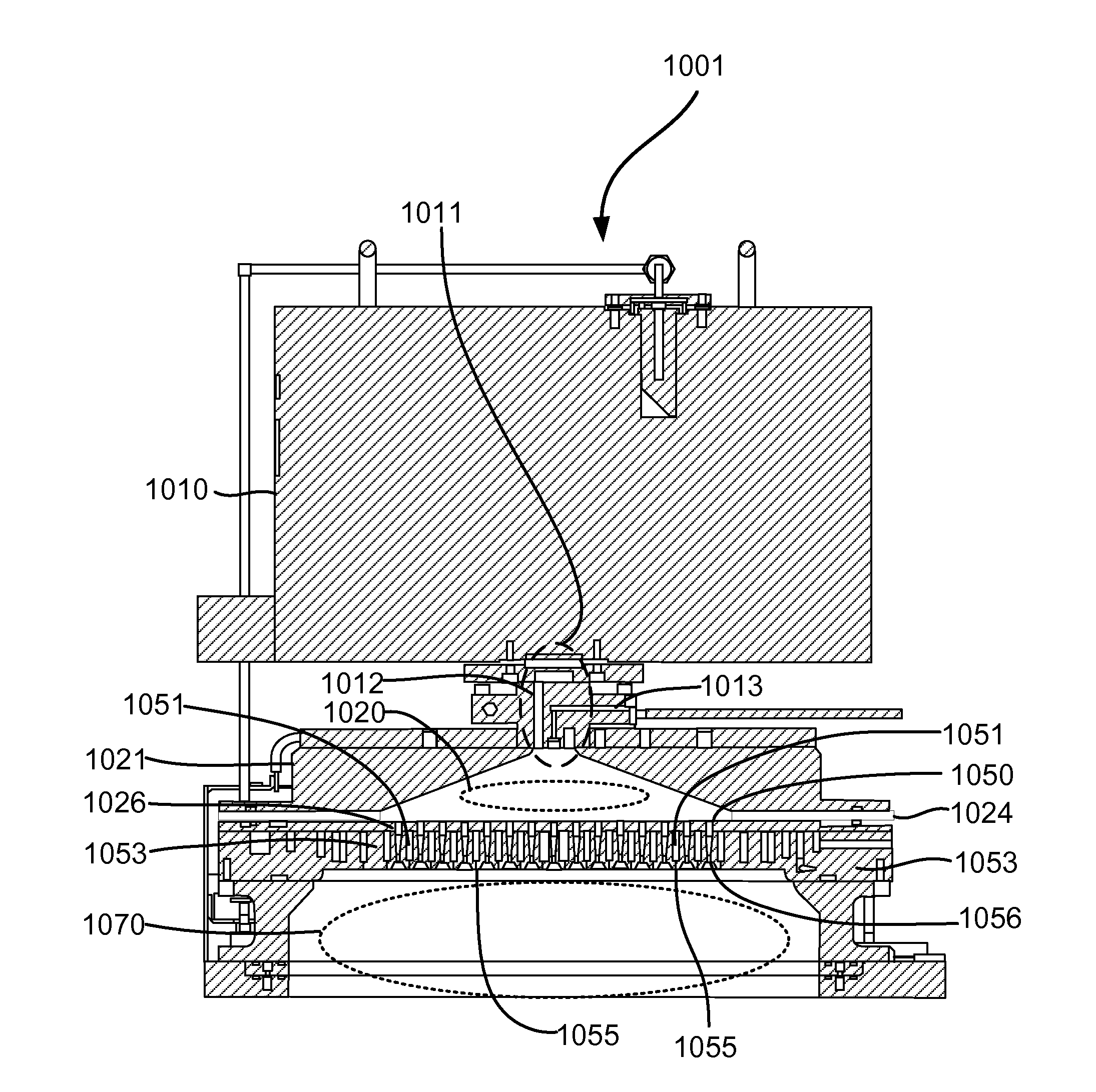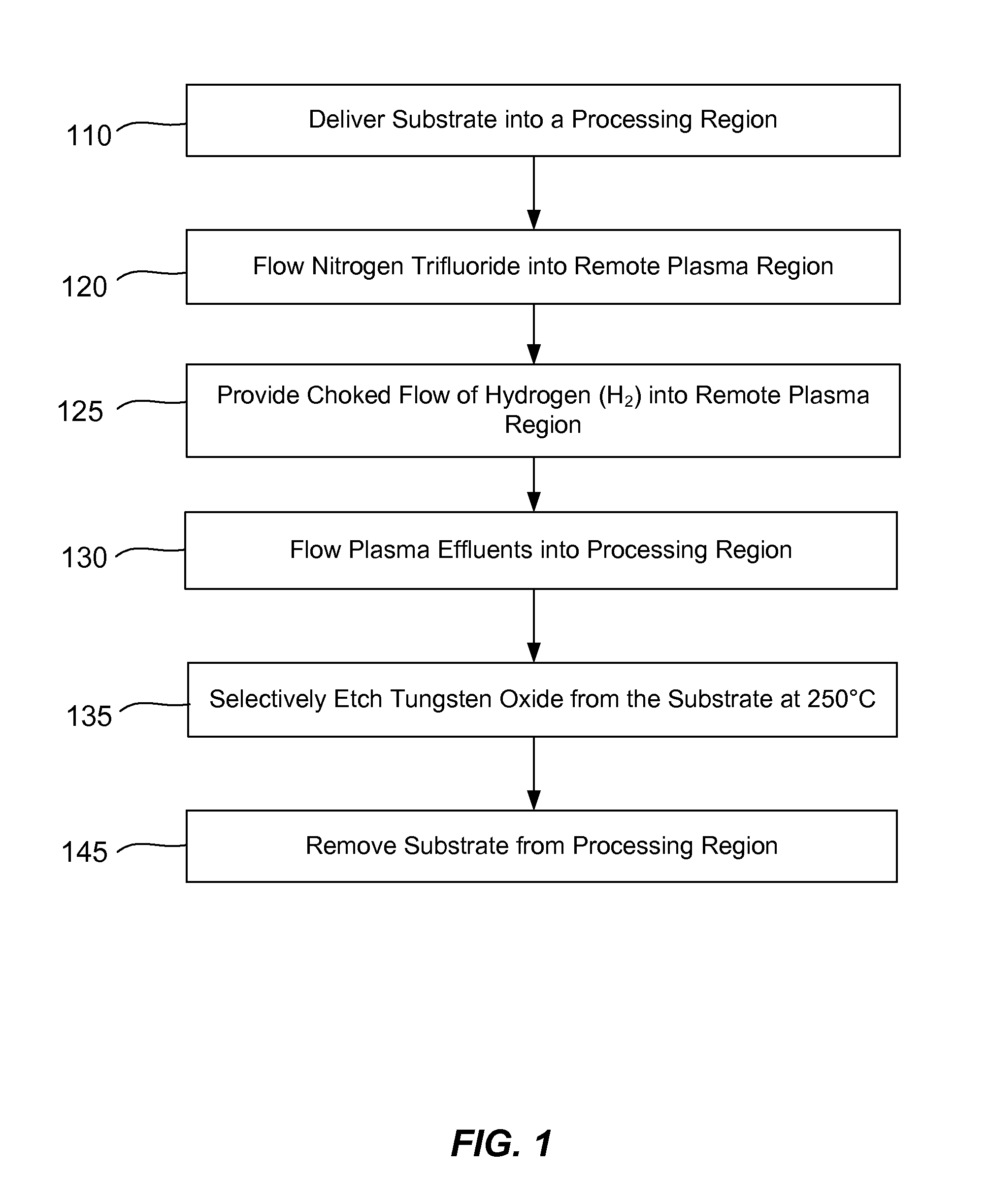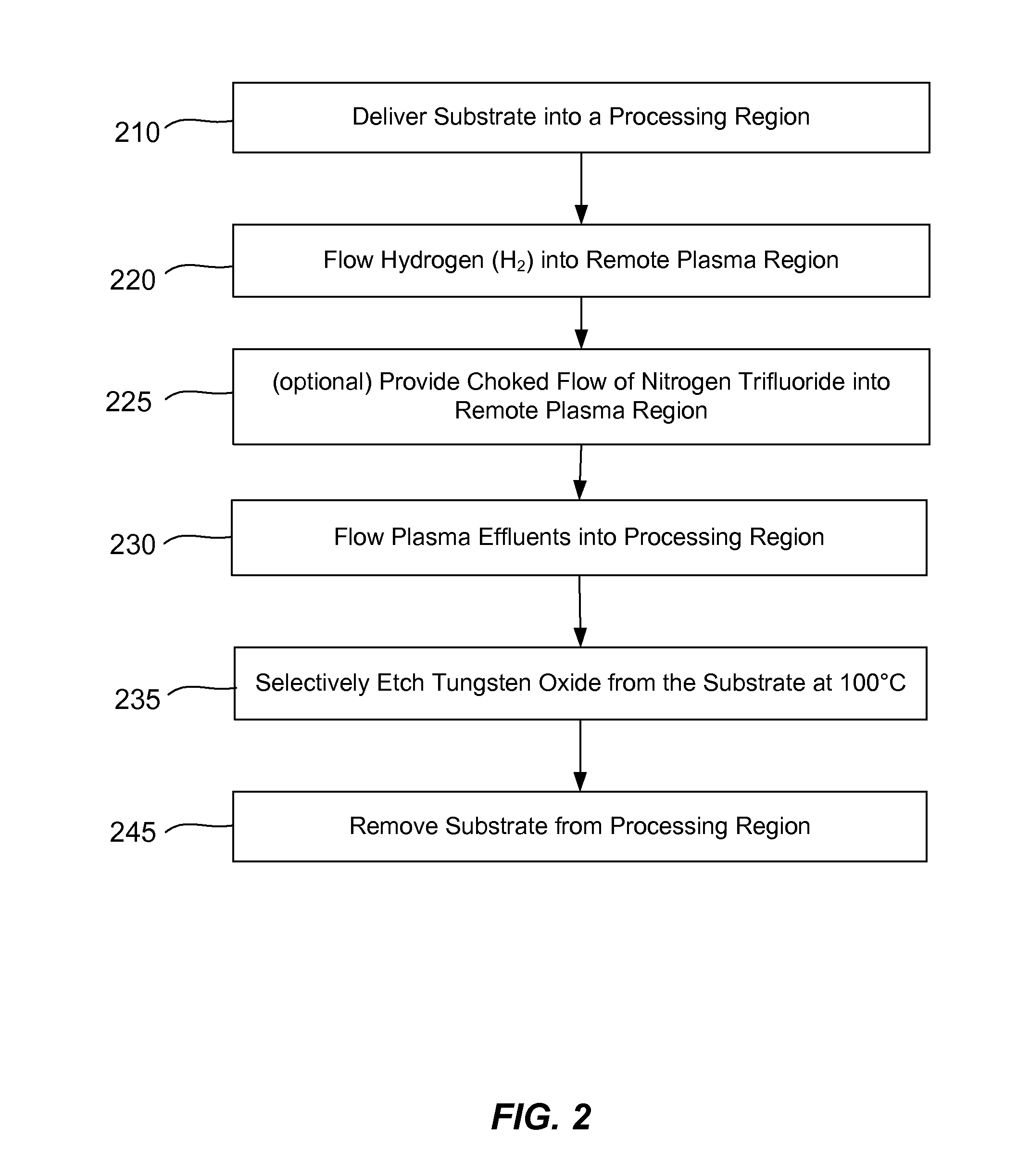Dry-etch for selective oxidation removal
a selective oxidation and dry-etching technology, applied in the direction of coatings, chemical vapor deposition coatings, electric discharge tubes, etc., can solve the problems that fewer dry-etching processes have been developed to selectively remove metals and/or their oxidation, and achieve the effect of slow removal of other exposed materials, reducing or substantially eliminating the number of ionically charged species
- Summary
- Abstract
- Description
- Claims
- Application Information
AI Technical Summary
Benefits of technology
Problems solved by technology
Method used
Image
Examples
first example
A First Example
[0017]In order to better understand and appreciate the invention, reference is now made to FIG. 1 which is a flow chart of a tungsten oxide selective etch process according to disclosed embodiments. The tungsten oxide may have a variety of stoichiometries which may be determined by the method of forming the tungsten oxide. Prior to the first operation, tungsten oxide is formed on a substrate. The tungsten oxide may be in the form of a blanket layer on the substrate or it may reside in discrete regions of a patterned substrate surface. In either case, the tungsten oxide forms exposed surfaces of the surface of the substrate. The substrate is then delivered into a processing region (operation 110). In another embodiment, the tungsten oxide may be formed after delivering the substrate to the processing region, for example, by treating exposed regions of tungsten to a reactive oxygen source.
[0018]A flow of nitrogen trifluoride is introduced into a plasma region separate f...
second example
A Second Example
[0027]In order to further appreciate the invention, reference is now made to FIG. 2 which is another but distinct flow chart of a tungsten oxide selective etch process according to disclosed embodiments. The various traits and process parameters discussed with reference to FIG. 1 will not be repeated here except when they deviate from those traits and process parameters. Prior to the first operation, tungsten oxide is formed on a substrate. The substrate is then delivered into a processing region (operation 210). In another embodiment, the tungsten oxide may be formed after delivering the substrate to the processing region, for example, by treating exposed regions of tungsten to a reactive oxygen source.
[0028]A flow of hydrogen (H2) is introduced into a plasma region separate from the processing region (operation 220). The separate plasma region may be referred to as a remote plasma region herein and may be within a distinct module from the processing chamber or a co...
PUM
| Property | Measurement | Unit |
|---|---|---|
| Temperature | aaaaa | aaaaa |
| Temperature | aaaaa | aaaaa |
| Temperature | aaaaa | aaaaa |
Abstract
Description
Claims
Application Information
 Login to View More
Login to View More - R&D
- Intellectual Property
- Life Sciences
- Materials
- Tech Scout
- Unparalleled Data Quality
- Higher Quality Content
- 60% Fewer Hallucinations
Browse by: Latest US Patents, China's latest patents, Technical Efficacy Thesaurus, Application Domain, Technology Topic, Popular Technical Reports.
© 2025 PatSnap. All rights reserved.Legal|Privacy policy|Modern Slavery Act Transparency Statement|Sitemap|About US| Contact US: help@patsnap.com



